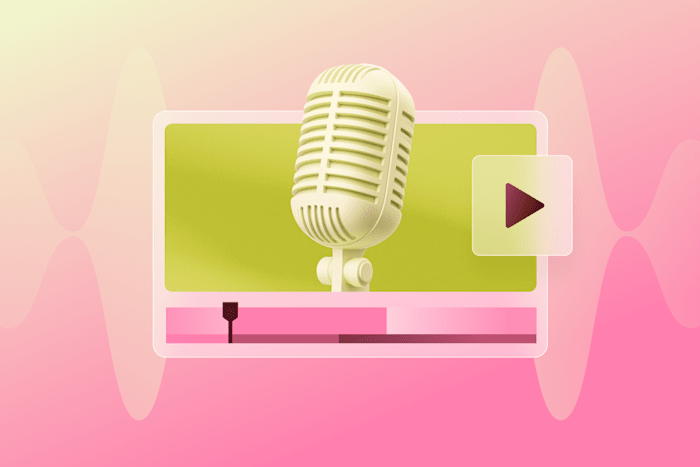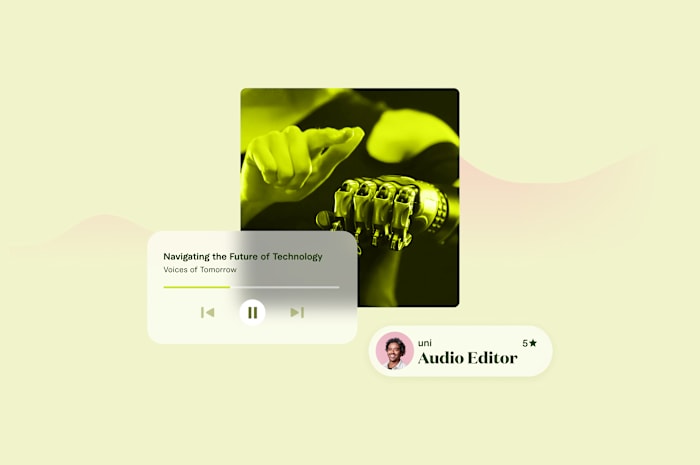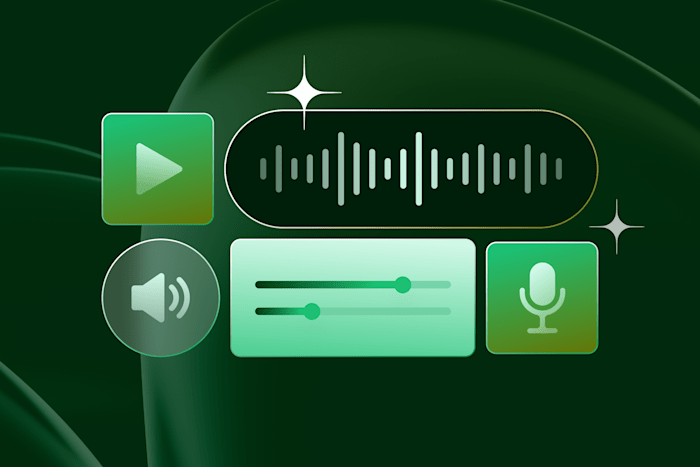What is a Vodcast? Start Video Podcasting Today
Discover everything you need to know about creating engaging video podcasts.
 May 7, 2025
May 7, 2025 7 minute reading
7 minute reading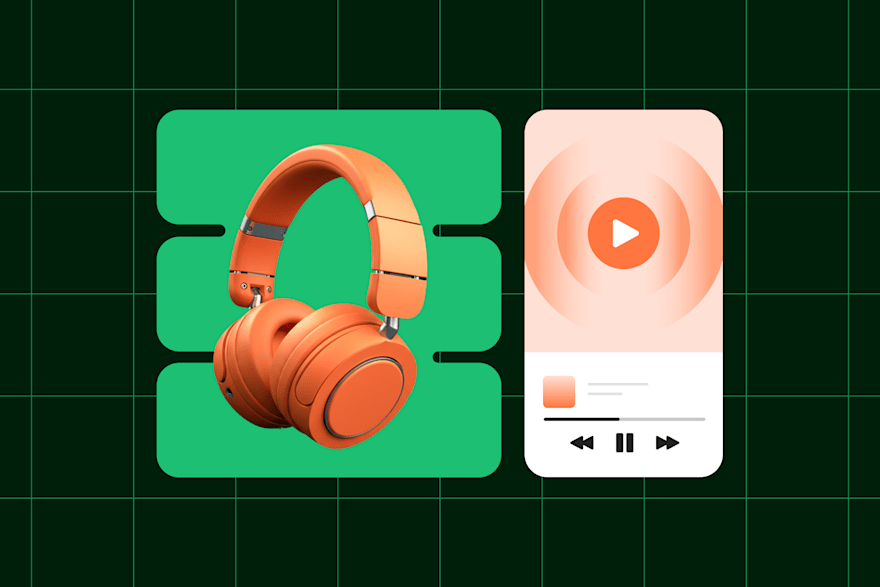
Audiences want video components in their podcasts. In fact, Statista reports that in 2024, 79% of weekly podcast listeners in the United States watched video podcasts. By combining the intimate audio experience of podcasting with the visual engagement of video, you can engage a larger audience and increase the value and credibility of a podcast.
In this guide, we'll explore everything you need to know about vodcasts: what they are, how to create them, the equipment you'll need, and effective monetization strategies.
What is a vodcast?
A vodcast is a video podcast. In other words, it’s a podcast that’s turned on some cameras to videotape the recording of the podcast (usually for social media content purposes), but isn’t highly produced and doesn’t require a lot of fancy video editing. This allows the audience to see the hosts, their expressions, and additional visuals that can enhance the podcast content.
The only real difference between vodcasts and podcasts is that a vodcast adds video to the audio of a podcast. Vodcasts still maintain the core characteristics that make podcasts popular: episodic content, subscription-based distribution, specialized topics, and an intimate, conversational format. They're more focused on conversation than highly produced YouTube videos, and they're designed for both listening and watching.
Benefits of a vodcast
If you're already podcasting or considering starting a content platform, you might wonder if adding video is worth the extra effort. The short answer? Absolutely. Vodcasting isn't just a trend—it's a powerful evolution of content creation that brings substantial benefits for creators and businesses alike.
Visual appeal
A vodcast adds a visual layer to content. Rather than just using audio cues, with video you can show products, movement, video clips, etc., allowing for more in-depth demonstrations, storytelling, and discussions. Also, when your audience can see your facial expressions, gestures, or branded visuals, it helps you capture the attention of audience members who are more visually oriented and allows your audience to connect with you on a deeper level.
Higher engagement levels
Compared to audio-only content, vodcasts typically enjoy stronger engagement. According to a 2024 Wistia report, viewers spend an average of 2.6x more time watching branded video content than reading blog posts of equivalent length. This means more time spent with your brand, more chances to convert, and a better shot at driving real action. With the rise of YouTube, TikTok, and video-first platforms, audiences have grown to expect visual content, and vodcasts hit that sweet spot.
Opens new marketing channels
Vodcasts can be repurposed across multiple platforms, expanding your reach. A single vodcast episode can become a blog post, social media clips, email content, or even short ads. Plus, platforms like YouTube and Spotify now support video podcasts, offering new SEO and discoverability opportunities. That's not just exposure, it's potential traffic and sales from places your brand might not have reached before.
How to make a vodcast
Much like starting a podcast, creating a vodcast can seem intimidating at first, but the good news is you don't need a film school degree or a Hollywood budget to create a compelling vodcast. With some basic equipment, a clear plan, and a bit of practice, you can produce content that looks professional and engages your audience on multiple levels.
This section will walk you through the entire process—from setting clear goals and planning your content to recording, editing, and promoting your finished episodes. Remember, the most successful vodcasts aren't necessarily the ones with the fanciest setups—they're the ones that consistently deliver value and connect authentically with their audiences.
Find a Vodcast Editor for Hire
1. Set goals
Set clear goals. Decide what success looks like. Are you aiming to grow brand awareness, build community, or drive traffic? Deciding and understanding your audience will be a big help in clarifying your goals. One goal that most podcasters and vodcasters are working toward is monetization. Things like sponsorships, affiliate marketing, or selling digital products are great ways to turn your vodcast into a revenue stream.
2. Plan your video content
Structure is key. Outline episode topics, formats (solo, interviews, panel), and ideal length. Think about the value you want each episode to deliver—and how it supports your brand. Keep your audience's pain points and interests at the center of your planning process.
It’s also a good idea to have contingency plans in place in case things don’t work out as expected. It’s always better to overplan than underplan, so that it’s easy to pivot if/when a guest has to cancel last minute.
3. Get the right equipment
In the sea of content out there, the look and feel of your video matters. Grainy video, scratchy audio, and bad lighting are going to make people click away from your content.
Invest in a good microphone, a decent webcam or DSLR, and lighting gear. You don’t have to go with the most expensive option—remember, a vodcast doesn’t require fancy features, extreme lighting, or different camera angles.
Also, don't forget recording and editing software. Like your podcast, your vodcast will most likely require some basic editing. Tools like Descript allow you to record, transcribe, and edit audio and video in one place, making production faster and smoother.
4. Create your stage
Your background should be clean, consistent, and on-brand. Remember, you have a visual aspect to your content, so take advantage of that. Whether you're recording in a home studio or a dedicated space, make sure it reflects your style and doesn't distract viewers.
Many vodcasters will put signs or posters up with their various social media handles or website address. Or if you have a branded logo, catchphrase, or color scheme, use that to reinforce your brand. For example, if you want viewers to feel like they’re on a couch with you just chatting, maybe use cozy sofas instead of office chairs. But if your vodcast is about cars, maybe hold it in a more industrial or garage-like looking space.
On a practical note, make sure the area that is going to be on camera is tidy and quiet without a lot of background noise. To go along with that, if you’re going to be in the video, make sure you look presentable as well.
5. Record your vodcast
Now that all the preparations have been made, it's showtime. Before actually hitting record, test all your equipment to make sure it’s working and everything is hooked up properly. There’s nothing worse than going through a two-hour recording session only to find out the microphones were glitching or one of the lights was flickering.
Once the record button is hit, stay natural but be prepared. Try not to think about being on camera or being on mic. Try to think of it as having a conversation with a good friend. Don't worry about small stumbles; you can always clean them up in post-production.
6. Edit your vodcast
Editing is where your vodcast comes to life. Cut out pauses, add captions, highlight funny bits, take out bits that didn’t work, include intros and outros, and insert branding elements like logos or lower thirds. Programs like Descript, Final Cut Pro, and Adobe Premiere Pro are popular tools that allow you to edit video and audio without needing a full production crew.
7. Promote your vodcast
Finally, it’s time to get the word out about your vodcast. To increase visibility, you can create short clips for TikTok, Instagram Reels, and YouTube Shorts. You can widen your reach by using marketing strategies like:
Sharing full episodes on YouTube and your website.
Sending special content to those who have signed up to be on your email list or Patreon fans.
Collaborating with guests or creators to cross-promote.
Repurposing audio for a podcast or blog post.
Vodcast examples
Here are three examples of successful and popular vodcasts to check out to help give you a better idea of how a vodcast can work for you.
True Crime Obsessed
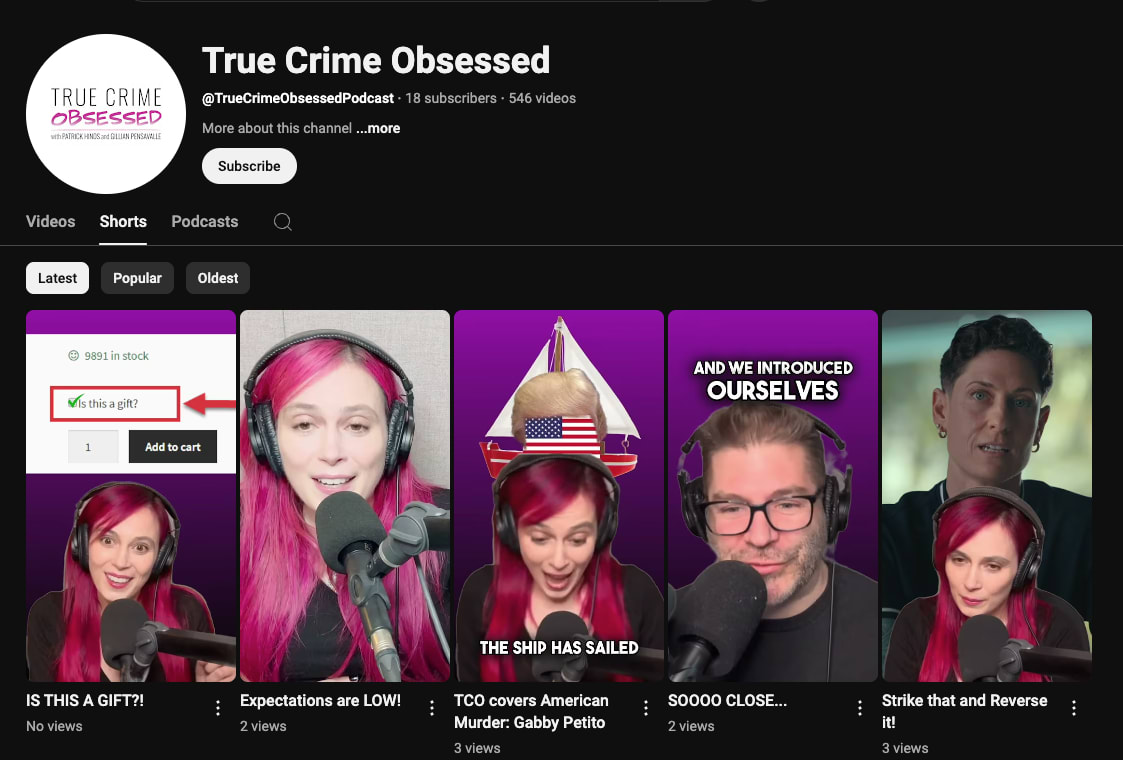
True Crime Obsessed
True Crime Obsessed started off as a true crime comedy podcast, but in the last couple of years, it has added a vodcasting element to the format. Most of their videos are clips for social media and promotional purposes, but they also use this video format to feature special events, like their monthly drag bingo, and special content reserved for their top-tier Patreon subscribers.
Baby, This is Keke Palmer

Keke Palmer
Keke Palmer uses her infectious personality, expressive nature, and lightning-fast wit to have discussions with various guests in her vodcast Baby, This is Keke Palmer. In this format, Keke posts her entire hour-long vodcast episodes on Youtube. This interview-style vodcast has a gorgeous set. Keke and guests are always camera-ready as they delve into topics from recent scandals, political stances, pop culture, and weird habits—everything under the sun.
Find a podcast editor for hire
Critical Role
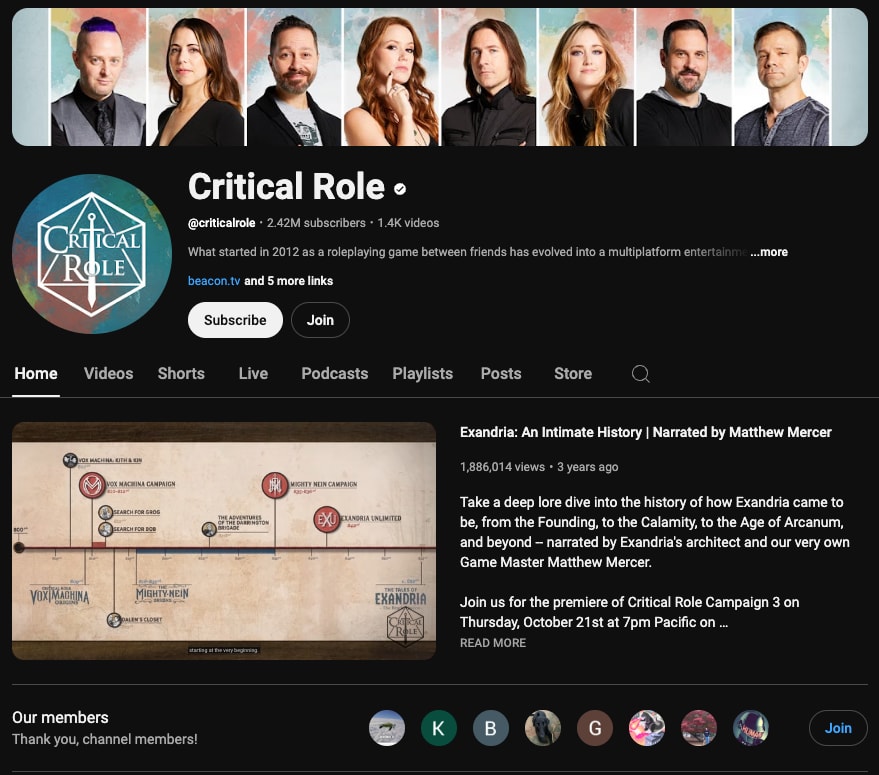
Critical Role
An episodic style vodcast with a single continuous storyline, Critical Role, is a Dungeons and Dragons podcast that follows professional voice actors playing various DnD campaigns. Because of the fantasy element that comes into play with the storytelling, participants in the vodcast dress up, there are sometimes set design changes, and there’s music production that adds to the campaign as the players progress through the story. The video element also helps to capture the reactions of players and the dungeon master as they travel through the adventure.
Hire vodcast production experts on Fiverr
Not everyone has the time or technical skills to handle every aspect of vodcast production, so you can always consider hiring a professional to help make the process easier. Freelance marketplaces like Fiverr can connect you with professional vodcast experts who can elevate your content while you focus on what you do best.
On Fiverr, you'll find services for every part of the vodcast production process:
Video editing who can transform your raw footage into polished episodes
Audio engineering who ensure crystal-clear sound quality
Graphic design who create eye-catching thumbnails and visual elements
Intro/outro creation who produce professional branded segments
Set design who help conceptualize your vodcast's visual identity
Script writing who can help structure your episodes for maximum impact
The platform makes it easy to find the right professional by allowing you to filter by price, delivery time, and reviews from other creators. You can review portfolios to find someone whose style matches your vision. Then, communicate directly about your specific needs.
What makes Fiverr particularly valuable for vodcasters is the ability to build ongoing relationships with freelancers who understand your brand. As your vodcast grows, you can continue working with the same professionals who already know your style and audience expectations.
Whether you need help with a single aspect of production or want to outsource the entire technical process, Fiverr provides an affordable way to access professional-level expertise without the overhead of hiring full-time staff.
Vodcast FAQs
What is a vodcast?
A vodcast is audio content enhanced with visual elements, combining the best of podcasting with video streaming. Content creators produce high-quality audio while adding video to grab a wider audience across both podcasting platforms like Apple Podcasts and video platforms like YouTube.
What is an example of a vodcast?
An example of a vodcast is the interview-style vodcast, Baby, This is Keke Palmer. Keke Palmer interviews various famous and not-so-famous people to talk about everything under the sun—from current events to random habits and love lives.
What is the difference between a podcast and a vodcast?
Unlike traditional audio podcasts, vodcasts allow viewers to see hosts, demonstrations, and visual aids that make things like tutorials and discussions more engaging. They can be livestreamed or recorded. They’re available in both long and short-form formats, and they are easily shared across social media platforms.
Many podcasters streamline their workflow by creating both audio and video versions of new episodes simultaneously to reach their target audience wherever they consume content. The visual component helps deliver quality content that connects more deeply with viewers while maintaining the conversational nature that podcast listeners love.
What is the difference between a vlog and a vodcast?
While both feature video content, vlogs (video blogs) are typically personal, diary-style recordings centered around a creator's life or activities without necessarily focusing on conversation. Vodcasts maintain a podcast's episodic, structured format with planned topics, guests, and discussions, but add visual elements. Vlogs are usually stand-alone videos without audio-only versions, while vodcasts are distributed across both podcast and video platforms. Vodcasts also tend to be more topic-focused and less about the creator's personal experiences.
